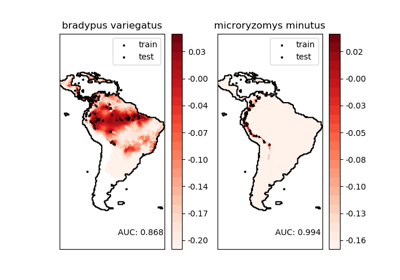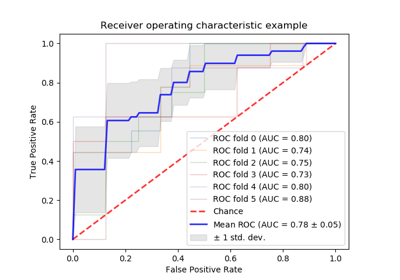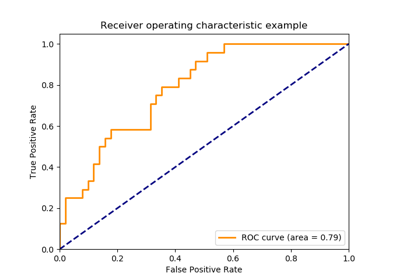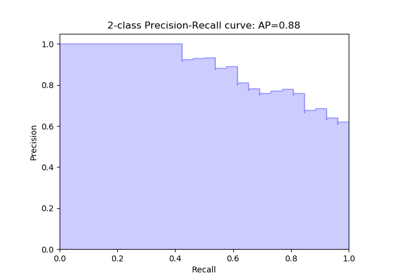sklearn.metrics.auc¶
-
sklearn.metrics.auc(x, y, reorder='deprecated')[source]¶ Compute Area Under the Curve (AUC) using the trapezoidal rule
This is a general function, given points on a curve. For computing the area under the ROC-curve, see
roc_auc_score. For an alternative way to summarize a precision-recall curve, seeaverage_precision_score.Parameters: - x : array, shape = [n]
x coordinates. These must be either monotonic increasing or monotonic decreasing.
- y : array, shape = [n]
y coordinates.
- reorder : boolean, optional (default=’deprecated’)
Whether to sort x before computing. If False, assume that x must be either monotonic increasing or monotonic decreasing. If True, y is used to break ties when sorting x. Make sure that y has a monotonic relation to x when setting reorder to True.
Deprecated since version 0.20: Parameter
reorderhas been deprecated in version 0.20 and will be removed in 0.22. It’s introduced for roc_auc_score (not for general use) and is no longer used there. What’s more, the result from auc will be significantly influenced if x is sorted unexpectedly due to slight floating point error (See issue #9786). Future (and default) behavior is equivalent toreorder=False.
Returns: - auc : float
See also
roc_auc_score- Compute the area under the ROC curve
average_precision_score- Compute average precision from prediction scores
precision_recall_curve- Compute precision-recall pairs for different probability thresholds
Examples
>>> import numpy as np >>> from sklearn import metrics >>> y = np.array([1, 1, 2, 2]) >>> pred = np.array([0.1, 0.4, 0.35, 0.8]) >>> fpr, tpr, thresholds = metrics.roc_curve(y, pred, pos_label=2) >>> metrics.auc(fpr, tpr) 0.75





